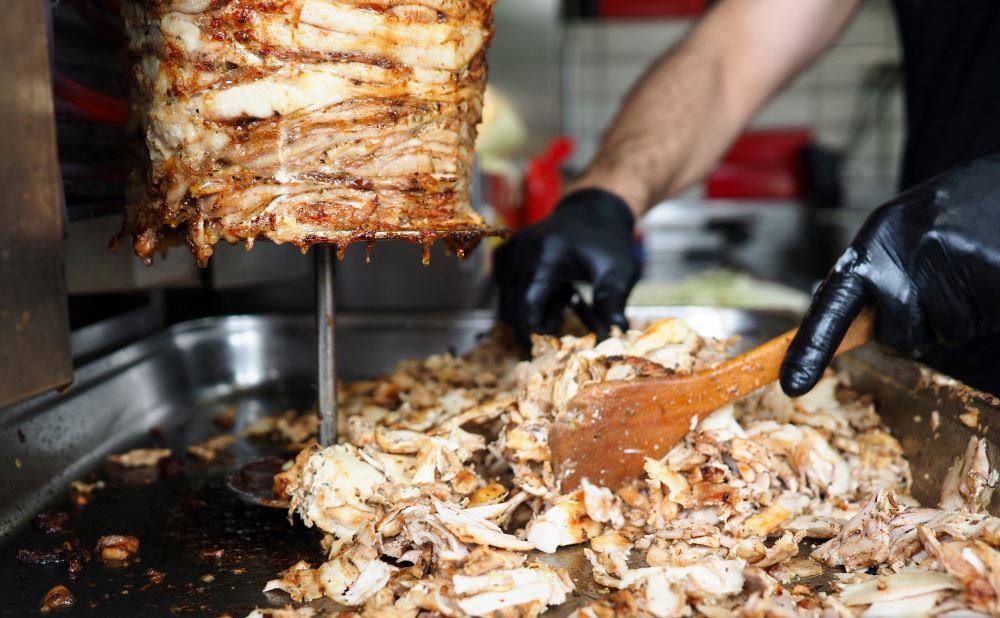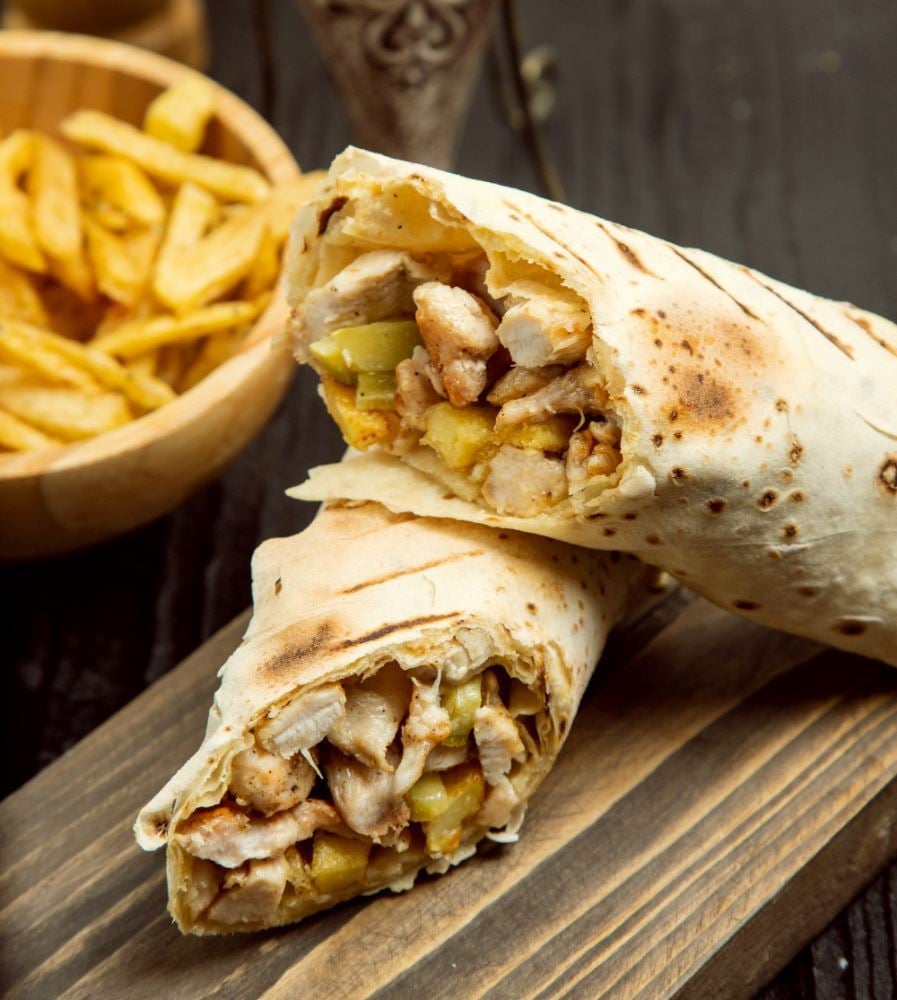The need for street sustenance on the move is provided by the sale of prepared food in a snack form on the street front, analogous to the modern Western culture of takeaway food.
The shawarma was adopted as the principal street-food snack and is the mainstay of the snack food trade in the Gulf States.
It is an import from a pan-Middle east tradition that now spans from Turkey to the Gulf States.
It is a meat sandwich made on demand from freshly prepared ingredients.
Despite competition from hamburgers and fried chicken takeaways, shawarma is maintaining its position as the preeminent street snack in the Gulf not only because of its excellent flavor derived from quality ingredients but also because it is a quick, convenient, and cheap food on the move.
Shawarma stalls are often small establishments, the core being the vertical roasting spits loaded with prepared lamb and chicken (laham, djaj), which are rotated by hand in front of a bank of gas burners.

These are on the edge of the pavement and may be backed up with a small restaurant with just a few seats and cold cabinets for drinks.
This is little more than a waiting and paying zone as all the action happens out on the footpath. Local ordinances may require that the food preparation is contained within a glazed frontage.
The meat is invariably identifiable cuts of meat.
It is not the homogeneous processed mass of meat that is used in some countries that have adopted the shawarma.
The clientele is discerning and usually have a regular shawarma stall that they frequent on a regular basis.
The shawarma stall advertises itself with an enticing display of food to attract customers.
Apart from the sight and aroma of roasting meat, there will be vocal calls to buy and the frequent rasp of carving knife on steel to attract customers.
The scene is theatrical as meat is briskly sliced from the vertical spit, scooped onto opened flatbread, spiked with pickles and chopped herbs, doused with tahina sauce, and finally rolled tightly into a screw of paper to be proffered to the customer ready to eat.
If chicken is chosen, the tahina will be replaced with a garlic sauce, and perhaps a cold chip or two will be added.
A vegetarian version will comprise several balls of falafel squashed into the bread pocket with pickles and tahina sauce.
The bread used may vary: in Kuwait, long bread rolls called samoor were used in the 1980s, the inner crumb being hollowed out to make way for the meat.
This is all produced with a flowing sequence of well-practiced moves.
There will usually be a cluster of customers being served and a posse of 4WD vehicles at the kerb also waiting for orders.
These are universally popular venues in the evening; whole families will be fed within the privacy of their vehicle, with food ordered by the driver and handed in through partially opened windows.
Text Source: Street food around the world: an encyclopedia of food and culture Book
